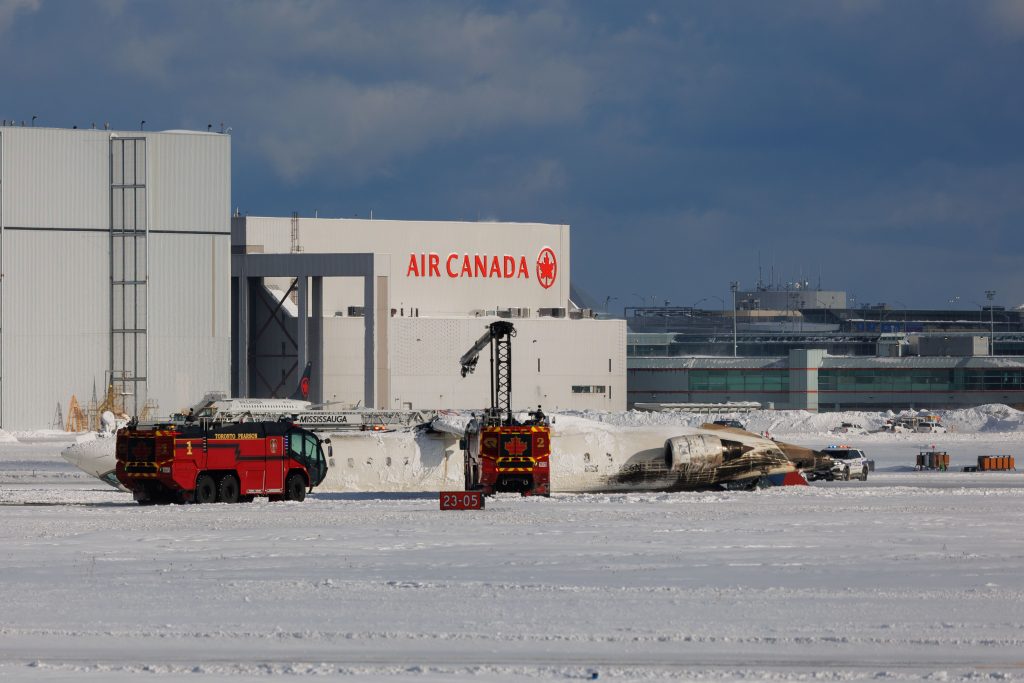What is that?: Full Circle sculpture represents 35,000-kilometre journey
Posted April 6, 2016 3:30 pm.
Last Updated May 27, 2016 12:33 pm.
This article is more than 5 years old.
What is that?: Toronto sculptures explained is a new series looking at a different sculpture in the city every week. Have you seen a piece of public art in your daily commute and wondered what it was about? Me too … so I’ve decided that I’d learn a little bit more about my own city and share it with you.
Full Circle | Queen and Victoria streets
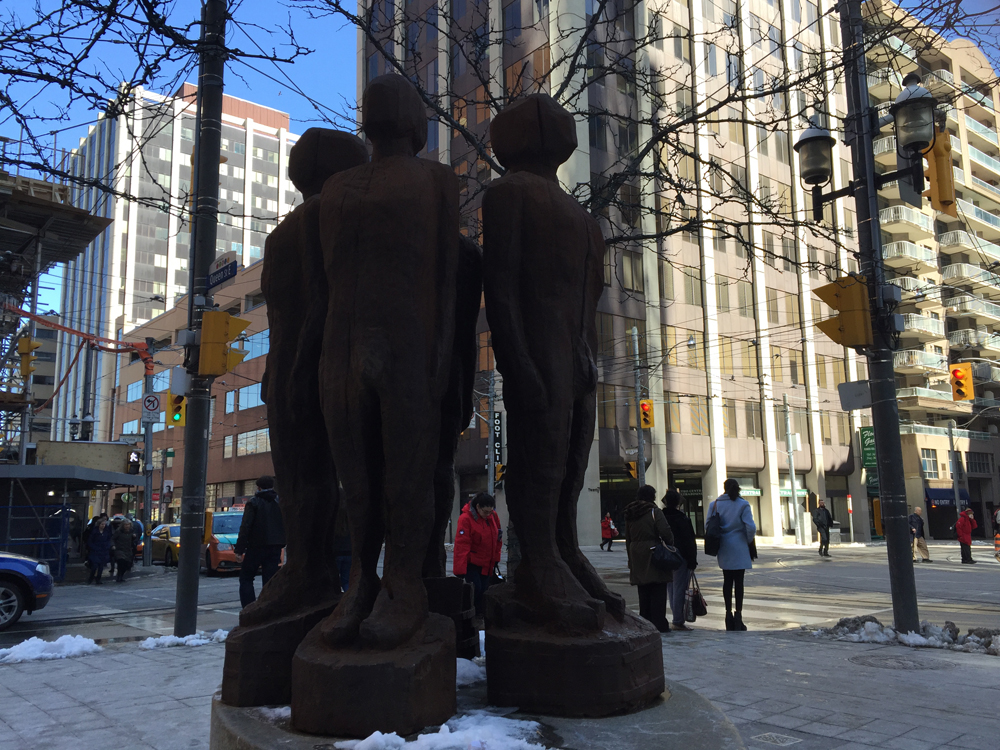
The inaugural sculpture for this series is Full Circle, a piece that features five figures on the northwest corner of Queen and Victoria streets.
The five original pieces went on a 35,000-kilometre, five-year journey through every province and territory of Canada, artist Peter von Tiesenhausen said.
“I’m really happy someone noticed it after 14 years,” he said. “It’s an epic tale.”
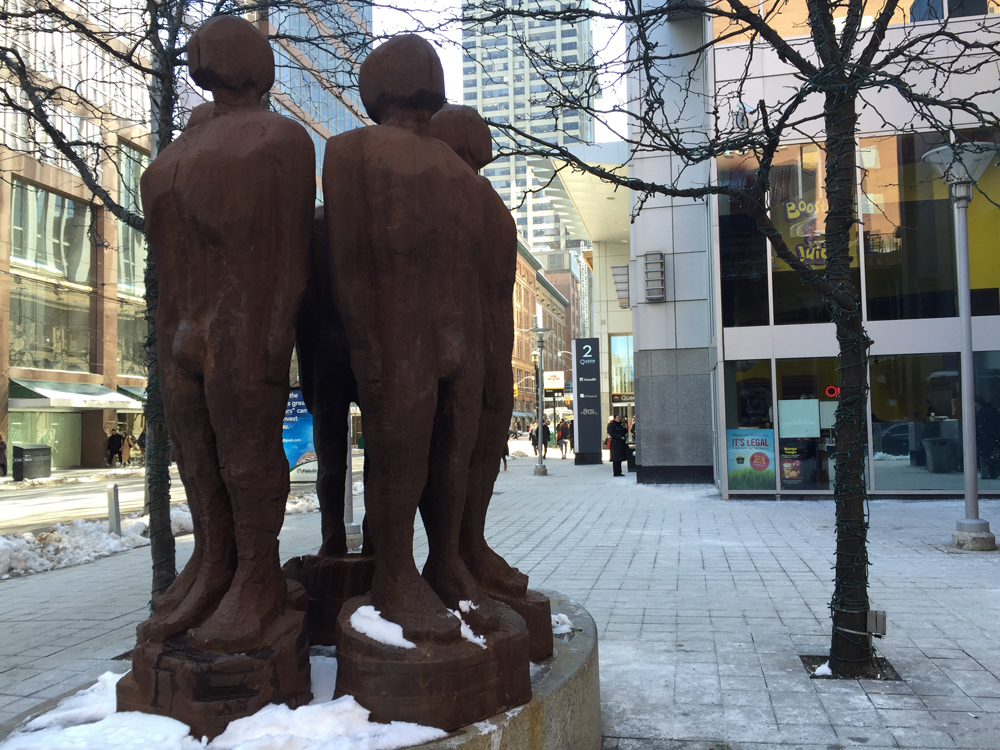
Original sculptures in Calgary
The Alberta man carved the original wooden figures out of logs taken from his property and put them on the roof of the Husky Tower on Macleod Trail, a major road in Calgary, where everyone driving into the downtown core would see it for six weeks.
From there, he loaded the figures into a truck, standing up.
“It started as a joke,” von Tiesenhausen said, laughing. “So I’m driving around in a truck with five guys standing in the back of my truck and got a diverse range of responses from doubled-over laughter to absolute horror. If I travel with them this way, it’ll force me into an uncomfortable situation, which is always a good idea for an artist.”
So that’s exactly what von Tiesenhausen did.
The journey begins
Von Tiesenhausen drove the figures to display in an exhibit in Hamilton in 1996. At the end of the exhibit, he decided to keep travelling.
“I looked at a map and realized I was halfway across Canada. Return shipping wasn’t paid for, so I kept going … I ended up in Newfoundland.”
Three kids had drowned in front of the building where he was staying just the day before.
At that point, von Tiesenhausen bolted the figures to a cliff in Flat Rock, Nfld., and flew home. He returned later to pick them up to continue the trip.
He had accompanied the figures throughout their 35,000-kilometre journey – except for a leg of the trip where the figures were on an Coast Guard Icebreaker through the NorthWest Passage.
The route was orchestrated and funded by the talks he gave, von Tiesenhausen explained. He said his wife and him were living “hand to mouth.”
“It was all based on who would put us up for the night and pay for a tank of gas,” he said. Somehow it always worked out.
The structures suffered some damage during a transfer from a helicopter to a barge on Sept. 10, 2001.
“One of the legs tumbled into the sea and another was severely damaged by high winds.”
There are holes and scars in the castings, representing that damage.
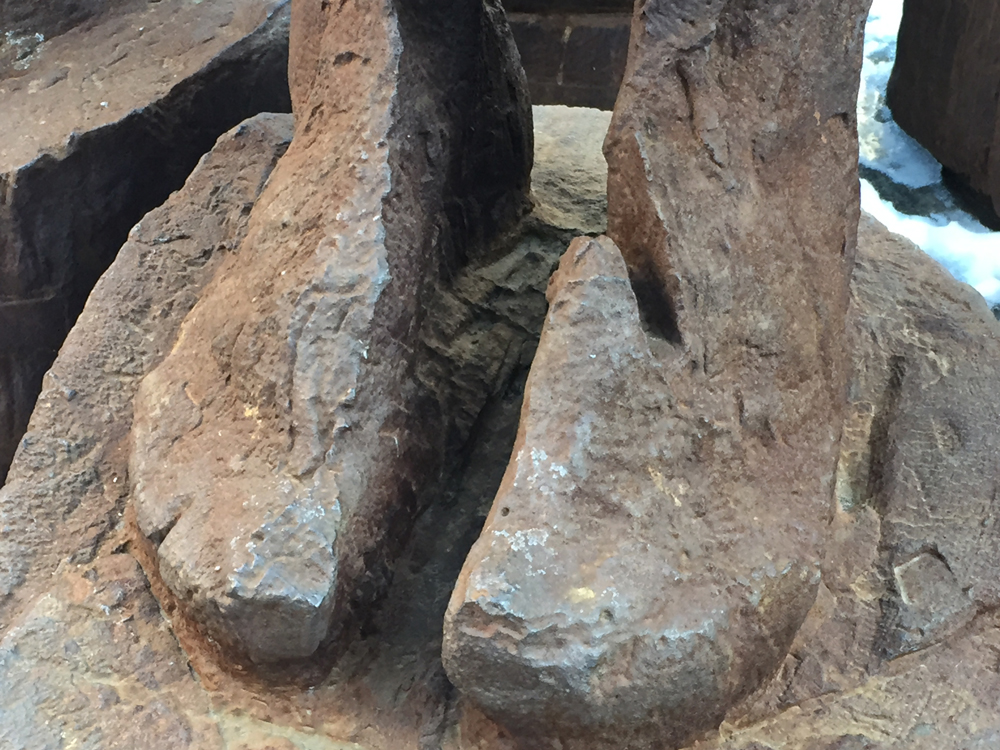
“I refused to do interviews of any kind until I got to BC,” von Tiesenhausen explains. “I wanted it to be a rumour or a myth, right? I didn’t want it to be a publicity stunt at all.”
At the end of the journey, he wondered why he did it.
“I had nothing to show after five years,” he said.
The Toronto sculptures are created
He then got a call from a Toronto art consultant to submit a proposal to have the structure displayed publicly. The proposal was approved and the sculpture, made of solid iron using melted Ford engine blocks, went up in 2002.
He said he has drawn a conceptual boundary across Canada with these figures.
“It’s the rust of the truck bleeding into the highways and the memories etched into the minds of the people and their histories.”
“During the journey, I became extremely aware of where I was. If I came by a First Nations reserve or a house fire where people died that night or the scene of a car accident or in Newfoundland where kids had drowned the night before …
“It’s not about a sculpture, it’s about consciousness and constant impermanence. They’re rusting. It’s the opposite of hubris, it’s about humility and being sensitive to who you are and who you’re with.”
He even said he hesitated making the art public since he thinks it simplifies the entire process.
Why five?
“One was too few, two was a couple and that didn’t make sense, three was too religious or something, four was two couples,” he said, laughing again. “Five made sense, it’s not a crowd, it’s five senses, it’s five elements. Six was half a dozen!”
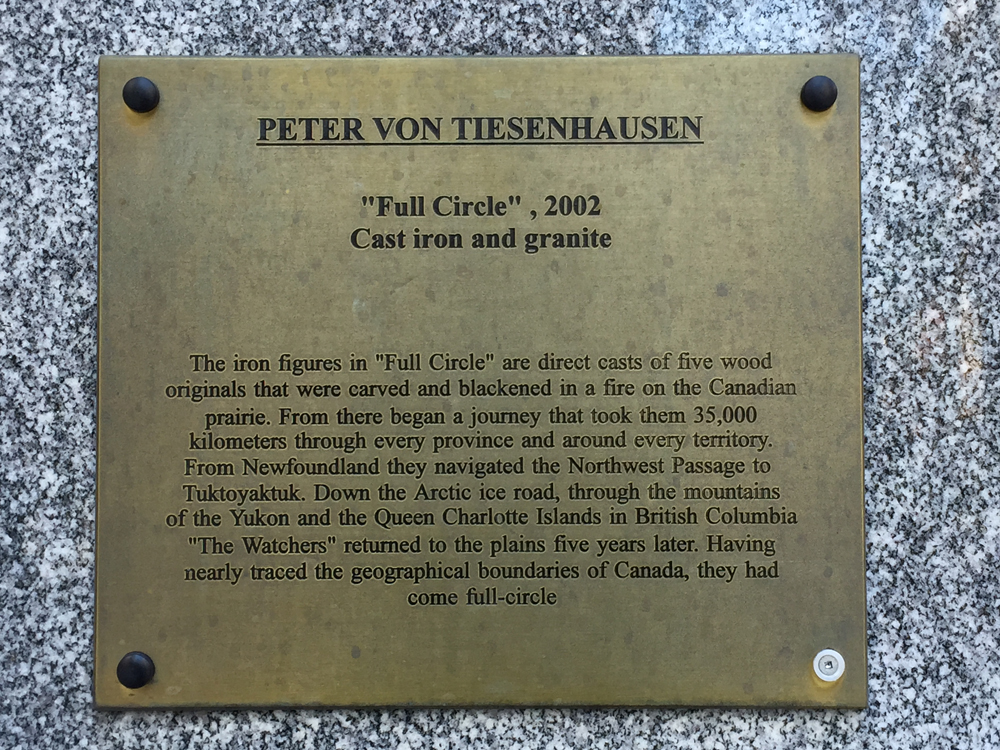
Do you have a sculpture you are wondering about? Let us know in the comments section below and we’ll feature it in a future edition.

